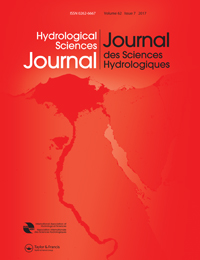Evaluation of GLDAS soil moisture seasonality in arid climates.
We evaluated the Global Land Data Assimilation System surface soil moisture product (GLDAS v. 2.1) against in situ soil moisture networks in arid climates in Australia and the United States, using common statistical metrics and seasonality metrics. Our results showed that GLDAS performed well (root mean square error (RMSE) = 0.100 m3/m3; unbiased RMSE (ubRMSE) = 0.060 m3/m3; correlation coefficient (R) = 0.555 on average) but systematically overestimated the soil moisture values (Bias = 0.067 m3/m3). The performance was better in Australian Oznet and the U.S. Climate Reference Network (USCRN), compared to the US Soil Climate Analysis Network (SCAN) network. In terms of seasonality, GLDAS soil moisture seasons were biased to start earlier; on average, drying and wetting transitions started 28 and 16 days earlier than in situ data, respectively. The end dates of GLDAS seasonal transitions showed good agreement with in situ data; the errors in transition timings were limited to within a week. This tendency is stronger in the US networks compared to the Australian network.

